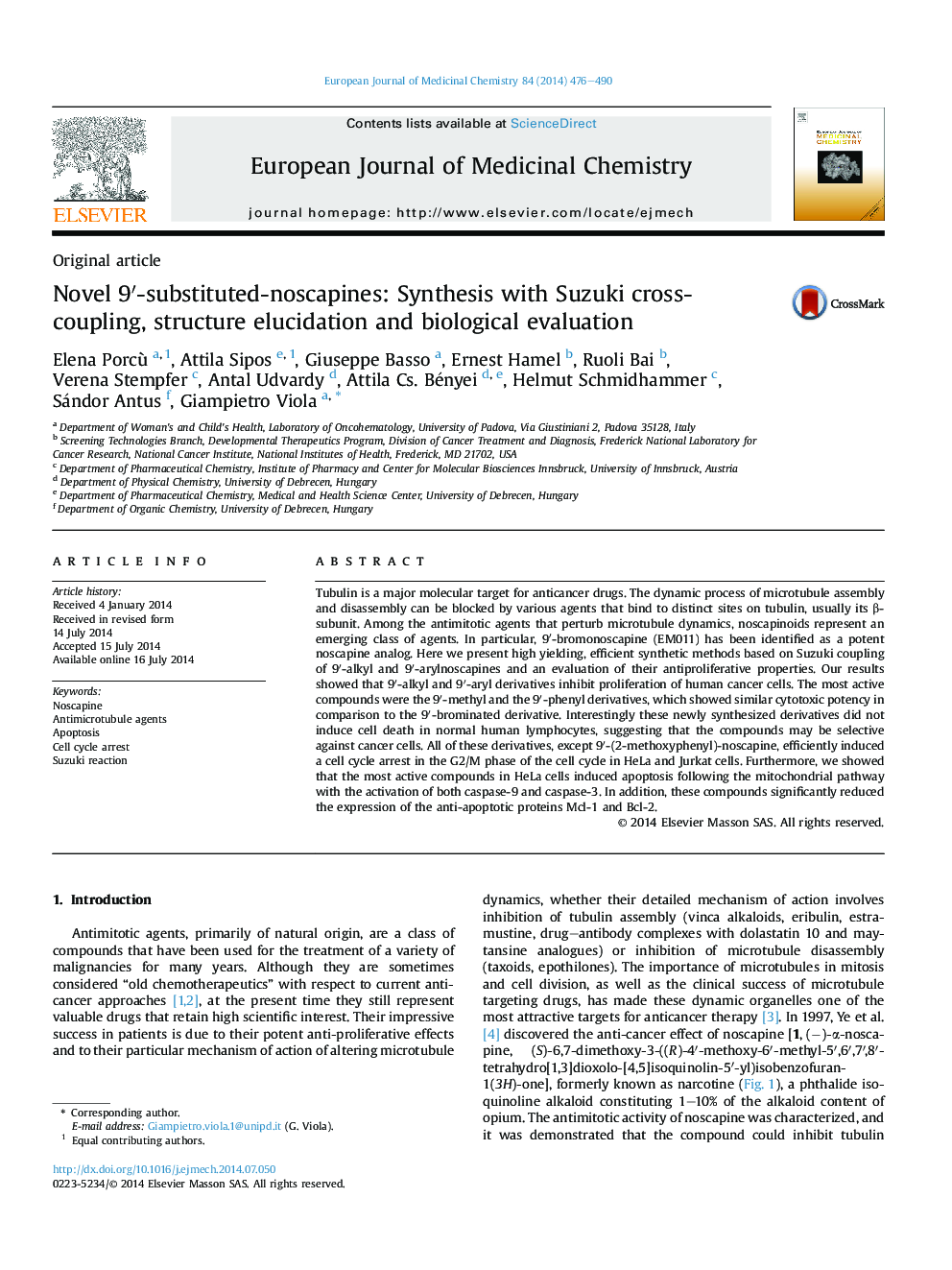| Article ID | Journal | Published Year | Pages | File Type |
|---|---|---|---|---|
| 1395625 | European Journal of Medicinal Chemistry | 2014 | 15 Pages |
•A series of 9′-alkyl and 9′-arylnoscapine derivatives were synthesized.•Efficient synthesis based on Suzuki reaction, gave high yielding of 9′-alkyl and 9′-arylnoscapine.•The compounds showed similar cytotoxic potency in comparison to 9′-bromonoscapine.•Compounds 3, 4 and 5 induced apoptosis by activation of caspase-9 and caspase-3.
Tubulin is a major molecular target for anticancer drugs. The dynamic process of microtubule assembly and disassembly can be blocked by various agents that bind to distinct sites on tubulin, usually its β-subunit. Among the antimitotic agents that perturb microtubule dynamics, noscapinoids represent an emerging class of agents. In particular, 9′-bromonoscapine (EM011) has been identified as a potent noscapine analog. Here we present high yielding, efficient synthetic methods based on Suzuki coupling of 9′-alkyl and 9′-arylnoscapines and an evaluation of their antiproliferative properties. Our results showed that 9′-alkyl and 9′-aryl derivatives inhibit proliferation of human cancer cells. The most active compounds were the 9′-methyl and the 9′-phenyl derivatives, which showed similar cytotoxic potency in comparison to the 9′-brominated derivative. Interestingly these newly synthesized derivatives did not induce cell death in normal human lymphocytes, suggesting that the compounds may be selective against cancer cells. All of these derivatives, except 9′-(2-methoxyphenyl)-noscapine, efficiently induced a cell cycle arrest in the G2/M phase of the cell cycle in HeLa and Jurkat cells. Furthermore, we showed that the most active compounds in HeLa cells induced apoptosis following the mitochondrial pathway with the activation of both caspase-9 and caspase-3. In addition, these compounds significantly reduced the expression of the anti-apoptotic proteins Mcl-1 and Bcl-2.
Graphical abstractFigure optionsDownload full-size imageDownload as PowerPoint slide
